Personalized Tumor RNA Loaded Lipid-Nanoparticles Prime the Systemic and Intratumoral Milieu for Response to Cancer Immunotherapy
- PMID: 30259750
- PMCID: PMC6597257
- DOI: 10.1021/acs.nanolett.8b02179
Personalized Tumor RNA Loaded Lipid-Nanoparticles Prime the Systemic and Intratumoral Milieu for Response to Cancer Immunotherapy
Abstract
Translation of nanoparticles (NPs) into human clinical trials for patients with refractory cancers has lagged due to unknown biologic reactivities of novel NP designs. To overcome these limitations, simple well-characterized mRNA lipid-NPs have been developed as cancer immunotherapeutic vaccines. While the preponderance of RNA lipid-NPs encoding for tumor-associated antigens or neoepitopes have been designed to target lymphoid organs, they remain encumbered by the profound intratumoral and systemic immunosuppression that may stymie an activated T cell response. Herein, we show that systemic localization of untargeted tumor RNA (derived from whole transcriptome) encapsulated in lipid-NPs, with excess positive charge, primes the peripheral and intratumoral milieu for response to immunotherapy. In immunologically resistant tumor models, these RNA-NPs activate the preponderance of systemic and intratumoral myeloid cells (characterized by coexpression of PD-L1 and CD86). Addition of immune checkpoint inhibitors (ICIs) (to animals primed with RNA-NPs) augments peripheral/intratumoral PD-1+CD8+ cells and mediates synergistic antitumor efficacy in settings where ICIs alone do not confer therapeutic benefit. These synergistic effects are mediated by type I interferon released from plasmacytoid dendritic cells (pDCs). In translational studies, personalized mRNA-NPs were safe and active in a client-owned canine with a spontaneous malignant glioma. In summary, we demonstrate widespread immune activation from tumor loaded RNA-NPs concomitant with inducible PD-L1 expression that can be therapeutically exploited. While immunotherapy remains effective for only a subset of cancer patients, combination therapy with systemic immunomodulating RNA-NPs may broaden its therapeutic potency.
Keywords: RNA nanoparticles; cancer immunotherapy; cancer vaccines; immune checkpoint inhibitors; liposomes; personalized therapy.
Figures
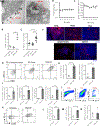
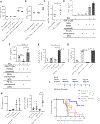
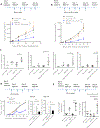
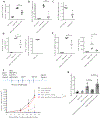
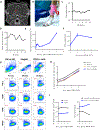
Similar articles
-
Immunotherapy of Tumor RNA-Loaded Lipid Nanoparticles Against Hepatocellular Carcinoma.Int J Nanomedicine. 2021 Feb 25;16:1553-1564. doi: 10.2147/IJN.S291421. eCollection 2021. Int J Nanomedicine. 2021. PMID: 33658783 Free PMC article.
-
Phase I Trial of Intratumoral Injection of CCL21 Gene-Modified Dendritic Cells in Lung Cancer Elicits Tumor-Specific Immune Responses and CD8+ T-cell Infiltration.Clin Cancer Res. 2017 Aug 15;23(16):4556-4568. doi: 10.1158/1078-0432.CCR-16-2821. Epub 2017 May 3. Clin Cancer Res. 2017. PMID: 28468947 Free PMC article. Clinical Trial.
-
Blockage of immune checkpoint molecules increases T-cell priming potential of dendritic cell vaccine.Immunology. 2020 Jan;159(1):75-87. doi: 10.1111/imm.13126. Epub 2019 Oct 24. Immunology. 2020. PMID: 31587253 Free PMC article.
-
The present status and future prospects of peptide-based cancer vaccines.Int Immunol. 2016 Jul;28(7):319-28. doi: 10.1093/intimm/dxw027. Epub 2016 May 28. Int Immunol. 2016. PMID: 27235694 Review.
-
Combining Tumor Vaccination and Oncolytic Viral Approaches with Checkpoint Inhibitors: Rationale, Pre-Clinical Experience, and Current Clinical Trials in Malignant Melanoma.Am J Clin Dermatol. 2018 Oct;19(5):657-670. doi: 10.1007/s40257-018-0359-4. Am J Clin Dermatol. 2018. PMID: 29961183 Review.
Cited by
-
Nanomaterial-based delivery vehicles for therapeutic cancer vaccine development.Cancer Biol Med. 2021 May 12;18(2):352-71. doi: 10.20892/j.issn.2095-3941.2021.0004. Cancer Biol Med. 2021. PMID: 33979069 Free PMC article. Review.
-
Personalized mRNA vaccines in glioblastoma therapy: from rational design to clinical trials.J Nanobiotechnology. 2024 Oct 4;22(1):601. doi: 10.1186/s12951-024-02882-x. J Nanobiotechnology. 2024. PMID: 39367418 Free PMC article. Review.
-
Nucleic Acid Immunotherapeutics for Cancer.ACS Appl Bio Mater. 2020 May 18;3(5):2838-2849. doi: 10.1021/acsabm.0c00101. Epub 2020 Mar 16. ACS Appl Bio Mater. 2020. PMID: 33681722 Free PMC article.
-
Immunotherapy for High-Grade Gliomas.Cancers (Basel). 2025 May 31;17(11):1849. doi: 10.3390/cancers17111849. Cancers (Basel). 2025. PMID: 40507329 Free PMC article. Review.
-
Phospholipid-Membrane-Based Nanovesicles Acting as Vaccines for Tumor Immunotherapy: Classification, Mechanisms and Applications.Pharmaceutics. 2022 Nov 11;14(11):2446. doi: 10.3390/pharmaceutics14112446. Pharmaceutics. 2022. PMID: 36432636 Free PMC article. Review.
References
-
- Brahmer JR; Tykodi SS; Chow LQ; Hwu WJ; Topalian SL; Hwu P; Drake CG; Camacho LH; Kauh J; Odunsi K; Pitot HC; Hamid O; Bhatia S; Martins R; Eaton K; Chen S; Salay TM; Alaparthy S; Grosso JF; Korman AJ; Parker SM; Agrawal S; Goldberg SM; Pardoll DM; Gupta A; Wigginton JM N. Engl. J. Med. 2012, 366 (26), 2455–65. - PMC - PubMed
-
- Borghaei H; Paz-Ares L; Horn L; Spigel DR; Steins M; Ready NE; Chow LQ; Vokes EE; Felip E; Holgado E; Barlesi F; Kohlhaufl M; Arrieta O; Burgio MA; Fayette J; Lena H; Poddubskaya E; Gerber DE; Gettinger SN; Rudin CM; Rizvi N; Crino L; Blumenschein GR Jr.; Antonia SJ; Dorange C; Harbison CT; Graf Finckenstein F; Brahmer JR N. Engl. J. Med. 2015, 373 (17), 1627–39. - PMC - PubMed
-
- Topalian SL; Hodi FS; Brahmer JR; Gettinger SN; Smith DC; McDermott DF; Powderly JD; Carvajal RD; Sosman JA; Atkins MB; Leming PD; Spigel DR; Antonia SJ; Horn L; Drake CG; Pardoll DM; Chen L; Sharfman WH; Anders RA; Taube JM; McMiller TL; Xu H; Korman AJ; Jure-Kunkel M; Agrawal S; McDonald D; Kollia GD; Gupta A; Wigginton JM; Sznol M N. Engl. J. Med. 2012, 366 (26), 2443–54. - PMC - PubMed
Publication types
MeSH terms
Substances
Grants and funding
LinkOut - more resources
Full Text Sources
Other Literature Sources
Research Materials
Miscellaneous

